What Is Marketing Psychology & How To Do It?
Have you ever tried to break into your customers’ heads and find out what they want? Have you ever desired to know the best strategies to persuade others to do something?
Psychology has solutions to what you are searching for. Psychology is the study of human mind and actions, which can be applied to a wide variety of areas, from everyday living and therapy and human services. Yet you may want to dig into the combination of psychology and marketing.
Before the advent of modern marketing, before buzzwords such as “customer-centric” or “consumer behavior”, the relationship between marketing and psychology was little, if not zero. Today, psychological marketing (or marketing psychology) is the backbone of any lucrative business.
For a marketer to effectively do their work these days, it is fair to say that they first need to fully understand who the customers are, what the customers desire, and what pushes them to make a purchase. Does it sound like psychology to you? If yes, that’s because these strategies are centered on psychological theories and are typically referred to as marketing psychology.
What is marketing psychology?
Marketing psychology taps into the way people think, behave, reason, and make choices. Marketing psychology aims to build a calculated emotional appeal, hence inspiring customers, which is all you need to secure a lifelong customer.
Irrespective of how unique the products you offer are, there is always a high chance that you are competing with someone. The goal of marketing psychology is to achieve an advantage over competitions. At the end of the day, humans are who you are dealing with, and humans are emotional.

Comprehending organizational goals and human behaviors can open many more opportunities and exciting ideas for your marketing strategies. Take the time to fully understand how a person behaves will be conducive to your company as it will uncover ways to provoke beneficial emotional responses in your potential customers. If your company can identify this company goals and human behaviors intersection, the company will undoubtedly level up.
Key takeaway: Marketing psychology has been generally described as “integrating a range of psychological principles into your content, marketing, and sales strategy.” Besides that, you might also think of marketing psychology as a way to discover humans’ tendencies and determine how this applies to their purchasing decisions.
What are the main principles of marketing psychology?
You do not have to be a psychologist to create a positive emotional appeal in your potential customers. Many marketing experts use these techniques to great success. You may, too, with a bit of study and experimentation.
Understanding how and why individuals behave and function in such ways is an essential component of effective marketing. All of your marketing efforts should originate from this knowledge. If, for instance, you’re a content marketer producing an infographic, if you start with your target user in mind, your attempts would be even more successful. Who are the viewers, and why are they should look at the graphics? What do you want them to do after looking at your pictures?
We have done the research and compiled eight top marketing psychology strategies to help launch your campaigns. We will examine how customer behavior is affected by these strategies, and we will clarify how you can implement these strategies into your broader marketing campaigns.
Marketing Psychology Principle number 1 – Social Proof.
This concept is already known to most advertisers, but it was too significant to be left out. Think of Social Proof as the “me too” effect where people tend to embrace the opinions or actions of a group of individuals they like or trust. Imagine an awkward dance from middle school — not many people are confident enough to be the first one on the dance floor. Still, after a few people are there, everyone else wants to jump in.
According to the theory of Social Proof, people make decisions depended on others’ behavior. But how does marketing relate to this?
People are more likely to buy from a business as they see other individuals using and enjoying the company’s goods. Good feedback, vast numbers of frequent customers, and positive user-generated content (UGC) make it more possible for your brand to get more buyers.

Employing Social Proof as a marketing campaign is especially useful for bringing in new customers.
New customers are yet to have direct interaction with the item, so they turn to current or past customers for their experiences. Analysis has consistently shown that people are more likely to trust what other buyers think about products than to believe what companies say about themselves.
You need an idea for highlighting your happy shoppers. We have three for you.
Ask for permission to post the reviews on your social media accounts anytime a new customer gives you a positive rating.
For example, Starbucks has continuously shared customer content, like short videos and images from their customers on Instagram to their social media, and even asks for suggestions from their customers on their web page. They also reposted content generated by users on their social media accounts creates more interactions. As a result, you can see that their tight-knit user community always queues up for the opportunity to purchase their new holiday-themed cup or specialty drink.
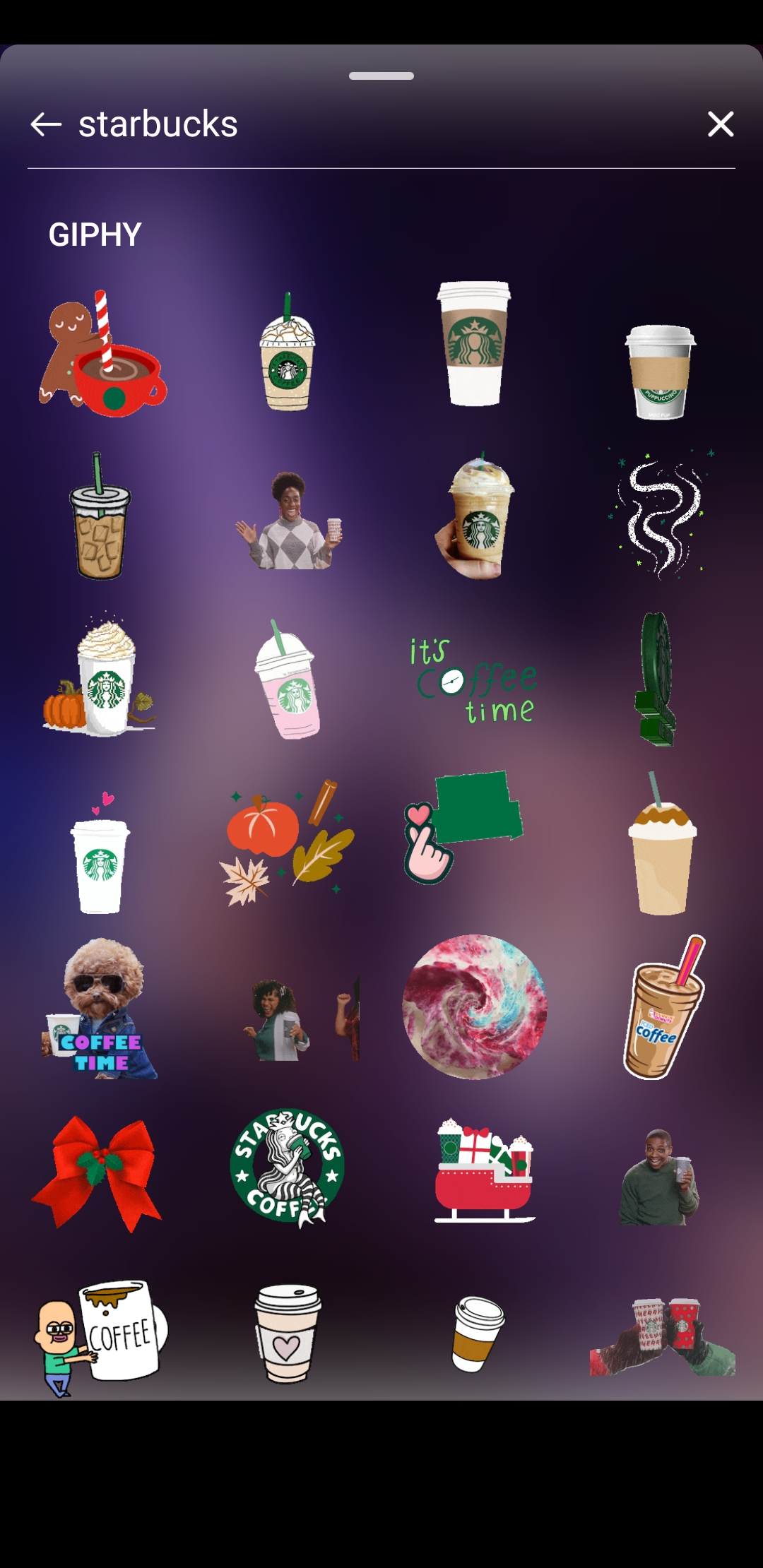
Speaking of User-generated Content, you can look at Apple’s #ShotiniPhone campaign. To show the world the power of its iPhone camera, Apple runs a UGC campaign called #ShotoniPhone. However, Apple does not just randomly pick any images to post on its Instagram; they have a very high standard for determining customer photos to share — the UGC pictures on the brand’s Instagram are all stunning with crisp details and vibrant colors. The hashtag is viral, with almost 10 million posts.
Just like Apple, you should also be a little picky about the content that you share. Your Instagram feed will be much more persuasive, and your high standards will inspire more people to submit.
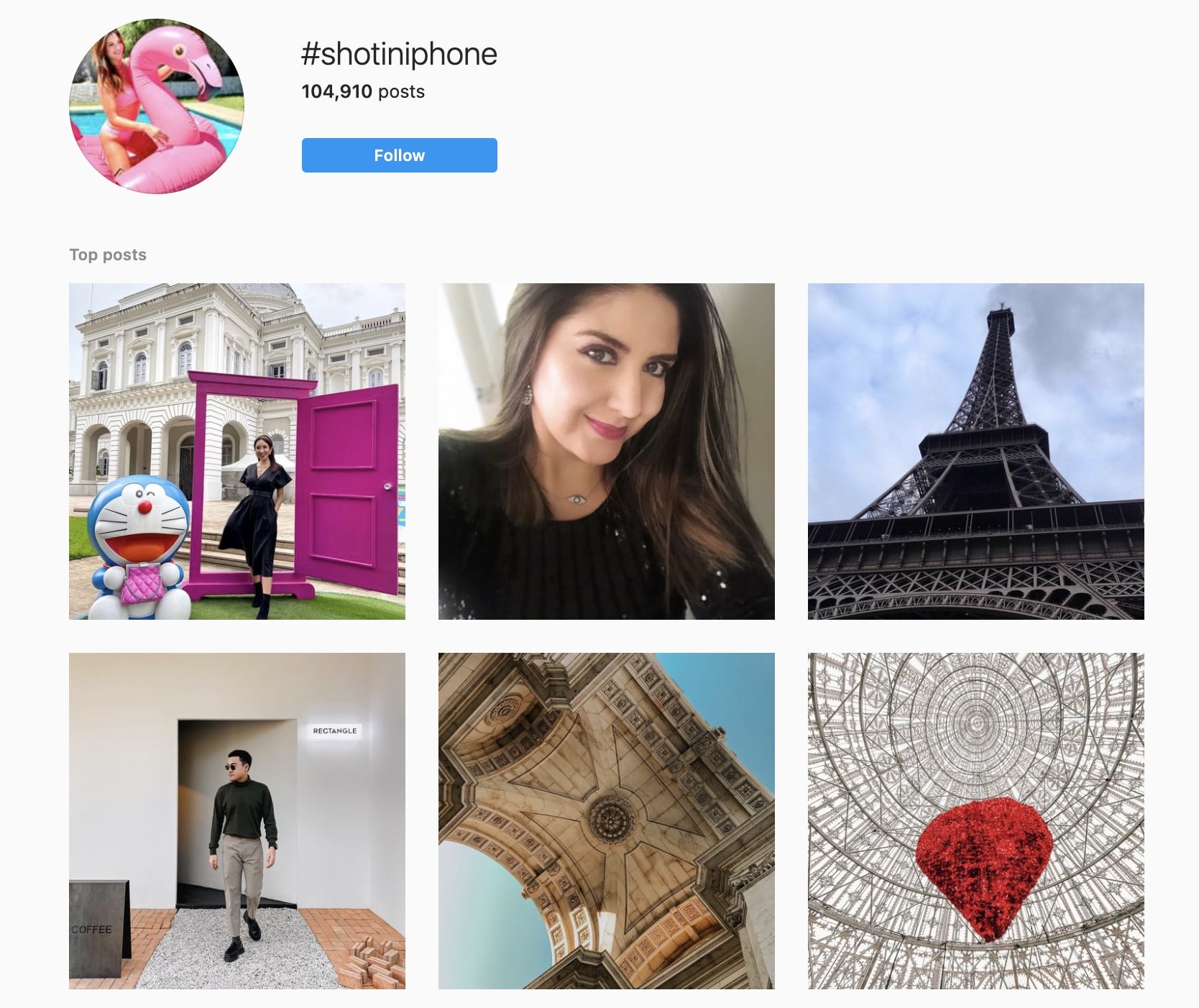
A Referral Program is yet another powerful tool for empowering existing customers to spread the message about your brand.
Take LinkedIn, for example. On an individual level, Linkedin allows its users to write reviews and recommendations to each other. Considering that most Linkedin users are trained practitioners, a positive word from others will act as living evidence of your talents and work ethic.
Tesla also has great ideas for you to steal. Tesla, the electric car company, has updated its referral policy to reflect its growing client base throughout the years. In 2015, they gave $1,000 to refer a friend to customers. Since then, they have modified their plan to give Tesla owners who refer several people to be entitled to even better rewards, such as an exclusive battery like Powerwall 2. For example, the first person to refer 20 individuals in their regions Asia-Pacific North America, or Europe can get a free Model S or Model X. Other referral prizes are an invitation to exclusive parties and the chance to buy other limited-edition items that were not available on the market.

Social Proof marketing does not only mean word-of-mouth. Social Proof also means the convincing powers of experts, celebrities, and user reviews as a way to increase people’s trust in your product or service. And the modern age has intensified the influence of Social Evidence Marketing to unprecedented heights. Here are other ways for you to apply Social Proof.
-
Hire an expert: Experts are those who have spent innumerable hours mastering their work and becoming a pioneer in their unique sphere. That is why when they endorse or are seen using a specific product, it’s possible that their followers, who have that particular need, will listen to the experts’ recommendation. Expert Social Proofing can be in many forms, for example, hosting a live Q&A on your Facebook and Instagram page or asking that expert to post their opinions on social media.
-
Have your product endorsed by a celebrity: Famous people and social media bloggers have a massive impact on their follower base, which may translate to thousands of new customers for your company. An example of endorsements used by many brands is to employ A-list celebrities for a campaign or give your product to an influencer who holds power in a demographic that you are targeting.
Marketing Psychology Principle number 2 – Scarcity
Rare items are always more valuable than everyday items. Think of rare minerals, such as emeralds or rubies, and they are worth more because of their rarity. This is the Scarcity principle.
This psychological theory suggests that people will put greater importance on products if there is a perceived scarcity. And it goes further than just precious gems. One research showed that people would value similar chocolate chip cookies more when there were fewer cookies available.
When it comes to marketing, the Scarcity principle suggests that people are more likely to purchase products or pay more for them if they believe that the commodity is in short supply.
Think of this marketing psychology as Fear of Missing Out (FOMO).
In other words, consumers don’t want to miss out on an item that may be out of stock soon. Scarcity induces a sense of urgency that facilitates impulsive buying. To establish a sense of Scarcity, you can run deals that are temporary or have a small supply. Use language such as “while supplies last” or “only 12 more hours” in the campaigns to let customers know that they will never get the chance to buy that product again if they do not make a purchase soon.
Seeing that the deal will expire, customers are more inspired to finish their customer journey. And make a buying decision.
Here are some other ways companies can apply Marketing Psychology Scarcity.
- Black Friday sales: Black Friday was initially the name assigned to sales that happened the day after Thanksgiving. Nevertheless, it has rapidly become a worldwide trend that draws bargain hunters all over the globe. For decades, retailers have worked on building a sense of Scarcity around heavily discounted, everyday items, especially during this shopping season.
There is no better example than Amazon when it comes to Black Friday. Their Prime Day campaigns have been a kind of case study for the whole industry on boosting profits by supplying shoppers with an innovative experience over the festive season. The key behind Amazon’s successful promotion for Black Friday is its fully digital approach for email marketing, from the personalized email promotions to the inclusion of promotional headers to emails and the exclusive awarding of early bird access to Prime members.
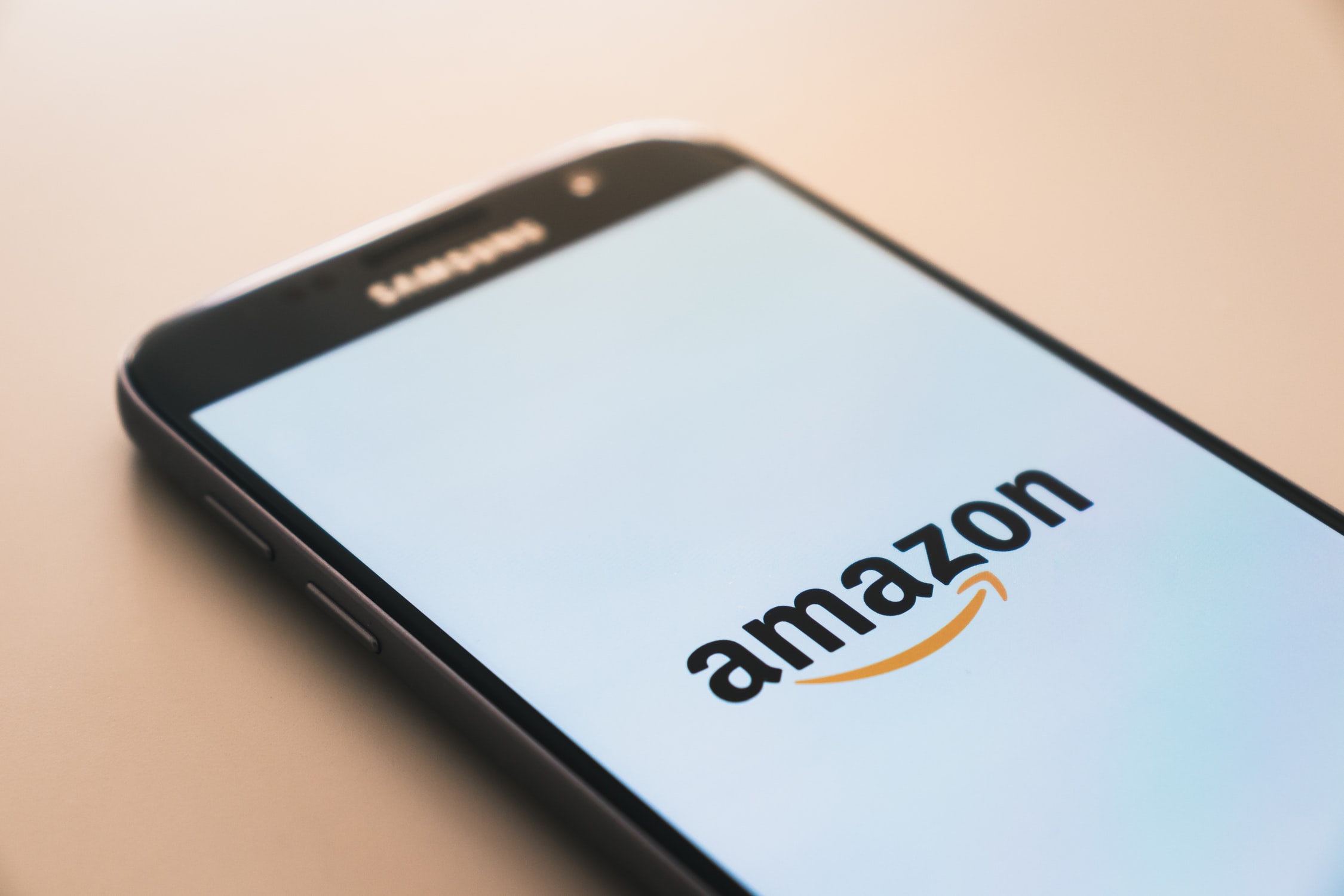
During Black Friday, Amazon utilized email promotions in every direction to boost their profits. Also, Amazon sent push notifications to encourage people to open the Amazon app and make an order. They also sent personalized newsletters along with popular prime videos, events, and suggestions for products to generate hype among Prime users. In 2018, Amazon’s prime day revenue rose to $4.19 billion.
- Exclusive access: Brands are able to make their product offerings feel premium and unique with upgraded membership options. Whether it’s VIP access to a unique gift or being given advanced options in a product, having access to something that isn’t widely available to others makes customers feel like they own something limited and thus unique.
For example, Nike launched its Nike App membership program in 2017, which offers members exclusive shopping perks. NikePlus Unlocks is an extension of Nike’s transfer towards improving its digital shopping experience by providing a more robust mobile shopping platform.
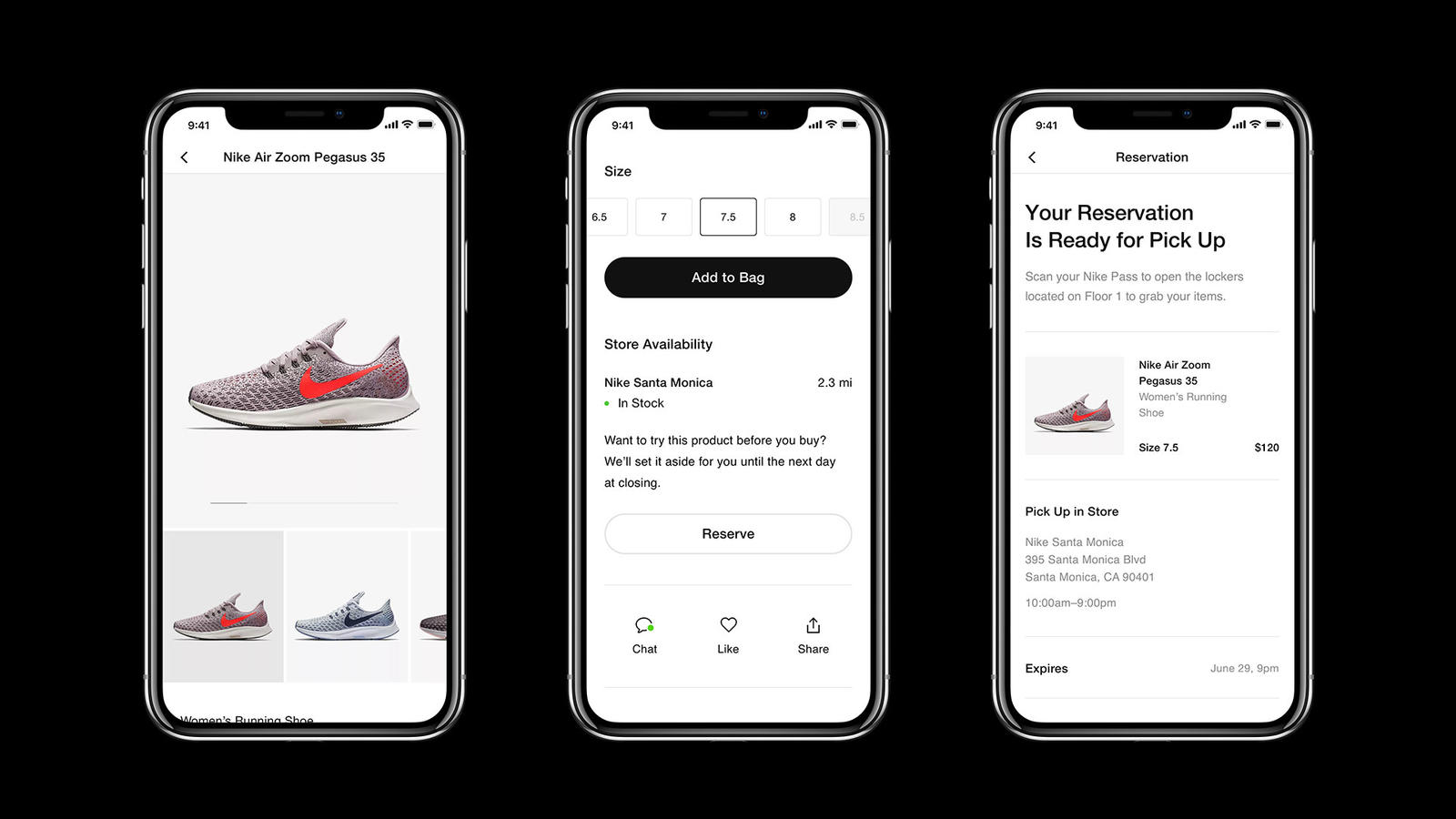
Nike App has a built-in intelligent reservation system based on previous purchases, allowing members to have exclusive access to specific products and get live Nike reps message. Nike App also gives you the chance to purchase a premium members-only product, including prized collaborations and the latest innovations, along with the options to customize that product. In fact, Nike App is the only place where customers can customize exclusive colorways of the new Nike Air Vapormax and Nike ACG Mowabb iD, or highlight your immense love for your team by adding an oversized logo and customized lace dubraes to the Nike Air Force 1 High NBA iD. Nike App is also the only place for you to buy the original colorway of the Nike Hyperadapt 1.0.
Marketing Psychology Principle number 3 – Reciprocity
Do you find it necessary to give them something in return (or at least feel ashamed if you didn’t give them anything) when somebody gives you a gift? This feeling is considered the principle of reciprocity in psychology.
The reciprocity principle in marketing psychology means that consumers often feel indebted to a business if given a free product. There are a lot of ways to take advantage of Reciprocity principle in your marketing. Companies often use this principle by offering free content, such as exclusive eBooks, articles, a branded sweatshirt, or even free desktop background to get contact detail from potential buyers. Even something as trivial as a hand-written note can do wonders in establishing reciprocity. **Just be sure you’re giving something for free before requiring things in exchange. The first ad the customer sees should highlight what they will be receiving, then ask for their contact detail after they click on the offer link. **
For example, a gardening supplies company sends a free package of seeds and surveys to existing customers. Since the customers have been given a present by the company, they would presumably feel obligated to fill out and return the survey.
Or, if you’ve received a mint with your bill at a restaurant, you have likely fallen into the victim of Reciprocity. According to Cialdini, when the restaurant doesn’t give the diners a mint, they will tip in accordance with their judgments of the provided service. With one mint, the tip rises by 3.3%. Two mints? The tip jumps rocketed to roughly 20%.

Body Shop, for another example, uses Reciprocity Principle by giving out free samples. This strategy depends on the give-and-take principle in the human mind. When making a decision, consumers will tend to give something back to satisfy this innate reciprocal instinct.
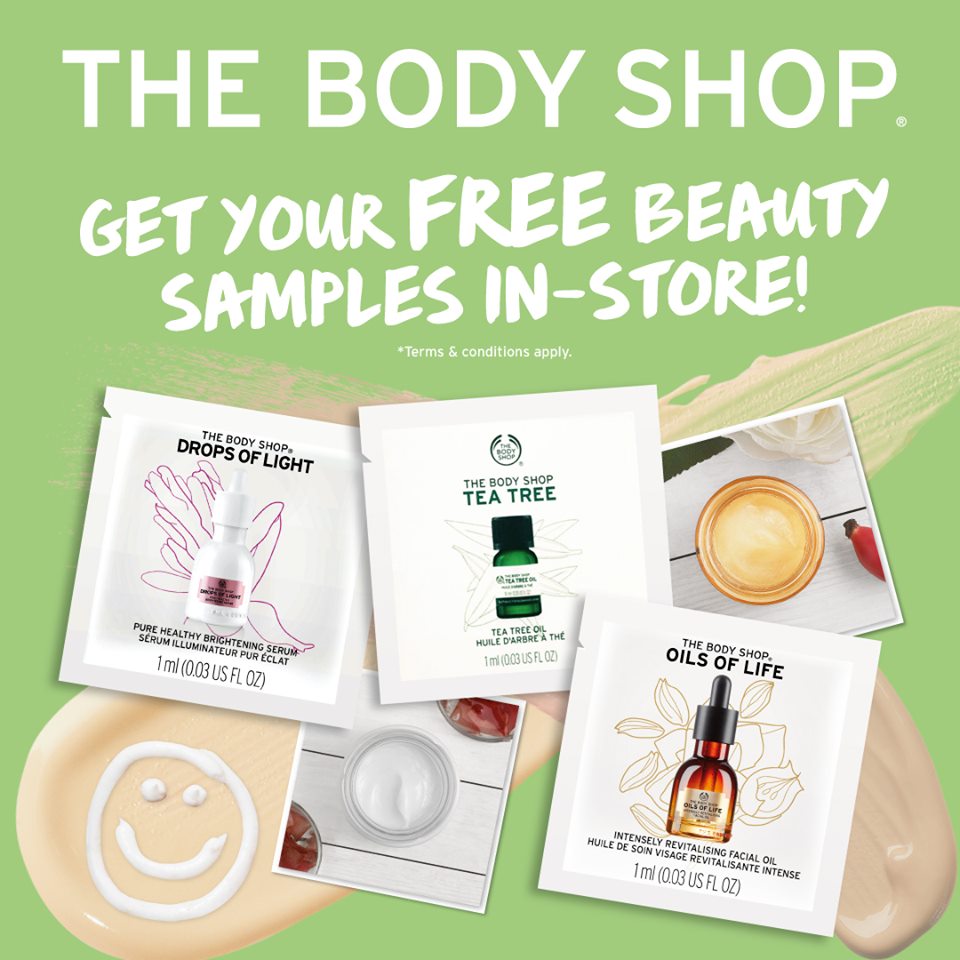
Marketing Psychology Principle number 4 – Loss Aversion.
As its name tells, the loss aversion principle refers to people’s tendency towards avoiding a loss instead of gaining other things with equal value. In other words, once people possess something, they really don’t like losing it.
For example, humans are more disturbed over losing $10 than we are delighted about finding $20. Why do we behave this way? It may be because the human brains associate loss with intense anxiety and fear, and negative feelings are found to have a more profound, more lasting influence on people than positive ones.
When Daniel Kahneman dug into this concept, he divides the participants into different groups. The first group was given a simple choice of receiving a mug or a chocolate bar. The second group was assigned a mug and then offered the chance to give the mug up for a chocolate bar. In contrast, the third group was given a chocolate bar first and then the opportunity to exchange it for a mug.
With the first group, slightly more than half (56%) of subjects chose a mug over a chocolate bar. However, regarding the third group, after being given a chocolate bar, 90% of them turned down the opportunity to change their chocolate bar to gain a mug. In contrast, nearly nine of ten (89%) of participants in group two refused to exchange their mugs for a chocolate bar.
The moral of the story is that people don’t like to lose what they’ve gained.
To implement this marketing-psychology principle, try reframing your current commercials around losses. When you give free trials, remind the customer what they are about to lose as their free trial is coming to an end. Or, you can suggest offering free shipping when a customer’s order has passed a certain price. If they move to checkout without hitting the minimum to receive a free-shipping, show them the amount of shipping cost they must pay compared to the amount they need to add for free delivery.
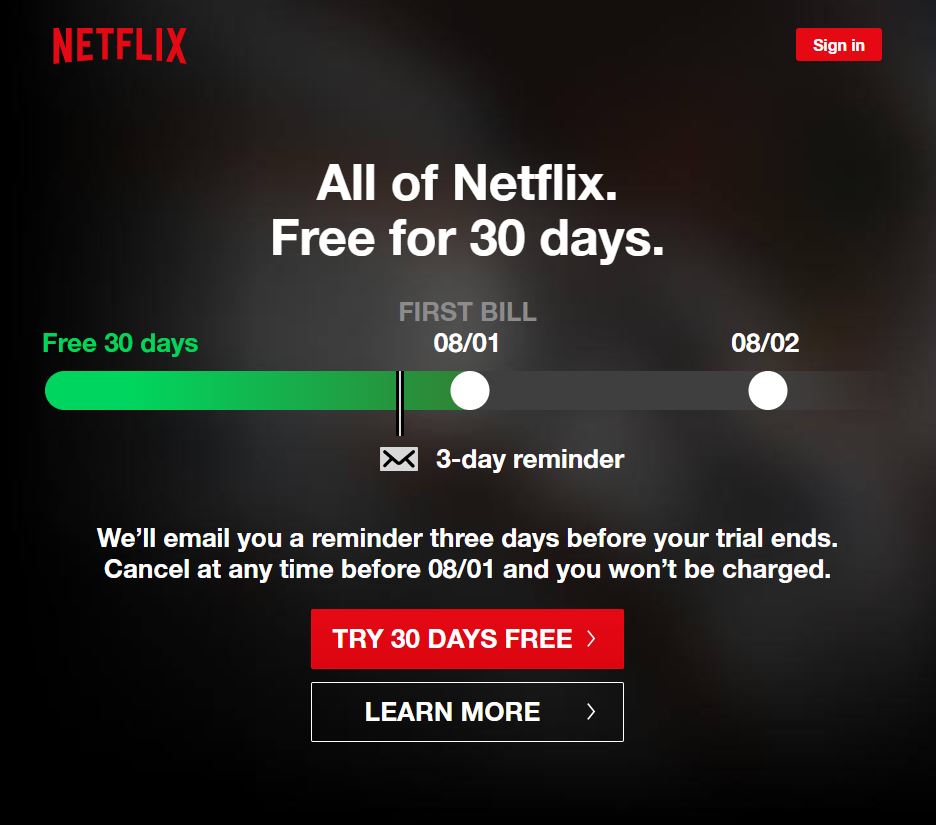
Look at Target, for example. This retail giant has been known to use this tactic with their online shoppers. If shoppers don’t meet the company’s $35 minimum, they won’t get free shipping. And if they don’t hit Target’s $25 minimum, they can’t even order the item at all.
Target bolds the phrase “Only ships with $25 orders” to inform shoppers that they will have to pay for the shipping fees if they do not reach the minimum order. When shoppers see that, they will be incentivized to make a larger purchase.

Some other Loss Aversion Marketing strategies are
-
Offer Trial: Study shows us that we value items we possess more than those we don’t. And so, by providing your customers the chance to own the product — even if it’s short term, you are making them feel the loss of not purchasing the item.
-
Limit resource: One way to inspire consumers to make a purchase is to remind them of the product’ scarcity. e-Commerce companies often create a certain inventory quantity and let the customer know if there are only a few more on stock.
-
Offer Gift: The idea of missing a free gift will also act as a good reason to persuade your visitors to make a purchase that they were initially sitting on the fence about, whether it be free delivery, a coupon code when a customer pays a certain amount, or free gift wrapping.
Some people may think the loss aversion and Scarcity principles are similar, which is valid to some extent, but the focus for each is different.
With Scarcity Principle, you highlight a limited supply of an item, but with the loss aversion principle, there is nothing to do with supply. Loss aversion means letting consumers know they may lose something they are possessing.
Marketing Psychology Principle number 5 – Anchoring Bias
Anchoring bias tells us that the first bit of information relevant to our buying decision we receive will significantly affect our decision-making process. What’s better for your wallet: buying a $3 condom or giving birth to a baby? Anchoring is the cognitive bias that affects how we view a product by comparing it to something else.
The Anchoring bias in marketing suggests that customers evaluate costs and goods based on the first information they get.
So, if my favorite boutique typically sells jeans for $60, but they decide to put them on sale for half the price at $30, I’ll be ecstatically thinking, “I just got a crazy discount on these jeans”. I’ll probably even buy them. But if my friend typically buys jeans that are $20, they won’t be nearly as impressed as I am.

Take full advantage of this psychological principle in your own business by showing actual cost along with reduced rates during sales. The original cost is now a reference point (an anchor) for the customer, making the discount seem like a better offer than if the discounted price were shown by itself. You might even explicitly tell how much of a percentage off your customers will earn with the sale.
Some other Anchoring Bias Marketing strategies are
-
Pick prices ending in 99: Kenneth Manning and David Sprott illustrated this in research using pens. The participants were asked to choose from two regular ballpoint pens, which were almost identical. One was priced at 1.99 dollars, the other at 3 dollars. The cheaper pen was preferred by 82% of the participants. The researchers then repeated the experiment, but changed the price to $2 and $2.99 respectively. The cheaper pen was still picked more often, but only by 56% of the participants. You see, the price gap between the second pair of pens was less important in the customers’ minds, and those few cents could add up to a significant rise in turnover in your company.
-
Provide more product range: Several consumers will initially deem a $40 cotton T-shirt to be too pricey. Yet put the same T-shirt next to a $99 luxury T-shirt, and people will look at the $40 option in a whole new light. Businesses focusing on a few select goods or services frequently usually take advantage of the Anchoring Bias principle by selling three versions of their product: an inexpensive option, a mid-range option, and an expensive option. The costliest option serves as an anchoring point to increase the price threshold for the mid-range product. If a premium option is offered alongside a mid-range option, sales for the latter will increase, even though there may be no change in the quality.
-
Increase prices little by little: How do you increase the prices without upsetting current customers? Let’s look at Apple’s strategy. For years, the firm has been steadily raising prices, despite complaints from critics who argue the product hasn’t improved that much. However, because each new price acts as an anchor for the next price increase, the customer finds the difference as comparatively small and welcomes it. So, instead of adding major and costly features all at once, you may consider introducing smaller, successive changes because customers will be more inclined to spend money on them.
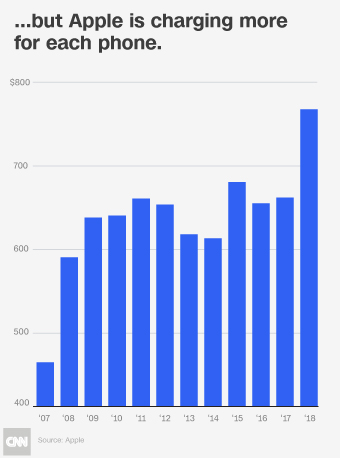
- Make discounts more appealing: you can extend the “rule of 100” to this context: For products that cost less than $100, the discount should be measured as a percentage. For example, a reduction from $5 to $3 amounts to a 40% discount, much more appealing than a $2 discount, right? On the other hand, for product prices more than $100, you should quantify the discounted price in dollars. For example, with an initial price of $500, a $100 discount would sound better than 20%.
Marketing Psychology Principle number 6 – The Decoy Effect.
Most of the principles above have vast implications outside marketing, but the decoy effect is almost unique to consumer psychology,
It is a cognitive bias in which adding a third, less attractive choice makes a more expensive product seem like a better offer than when there are only two products to choose from. The Decoy Effect is a statistically proven strategy for manipulating the human brain’s desire for both rational choice and validation of its own decisions.
Consumers specifically compare the price and quality of the goods when there are just two options. However, a third choice will shift the conceptual view of the goods offered to the buyers, increasing the chance that they buy the more expensive option.
The Decoy Effect is what Apple has most of the time used for its items. The first thing that springs to our mind when we think about apple and the Decoy Effect is their use of various storage limits of 64GB, 256GB and 512GB on a handful of its product, being it iPhone or iPad, or Mac, which introduces more exclusivity in its product portfolio. The Decoy Effect also explains why Apple always prices each device depending on the version, such as the $799, $999, and $1099 price points of the current iPhone 12, iPhone 12 Pro and iPhone 12 Pro Max, respectively.

You can apply the decoy effect to your price offering by following five steps below:
- Step 1: Choose your key item - the one you wish to sell the most.
- Step 2: Structure the key item - the key thing should have more advanced features than the other items.
- Step 3: Build a decoy - The aim is to make your key item dominate the decoy and maximize its attractiveness.
- Step 4: Provide at least 3 options; but don’t go nuts and provide more than 5.
- Step 5: Pick the same or a marginally lower price for the decoy close to your key item.
Marketing Psychology Principle number 7 – Information gap.
The Information-Gap Theory is often seen in content and social media marketing. You can see the theory used in the way content creators write headlines as questions or phrases such as: “How To…” or “The Secret To…” or “The Shortcut to…” These headlines are used to pique the viewers’ attention wanting to fill the information gap.
Here are some examples of how to use information gap theory within a sentence:
- The secret to getting visitors to click on your blog is to use the information gap theory.
- The best way to boost blog traffic is to use the information gap theory.
- Have you ever wondered how to improve your online marketing using psychology?
Can you see how it’s going to work? These sentences set a target (to get people to click on your blog, boost blog traffic and improve your online marketing) as well as to offer the solution to that goal (using the principle of the knowledge gap and using psychology), but leave a big hole on how you get from point A to point B. This is the void in information that will spark your readers’ interest, prompting them to continue reading.
Bear in mind that this Marketing Psychology taken too far can become a click-bait, and many content creators are avoiding misleading headlines that don’t match the content of the article.
Brands also aim to direct fans into their homepage with social media to boost traffic. Whether it’s luring followers to the newest sale or news story, you’ll often find brands use an ambiguous selling point on Instagram Stories with a “Swipe Up” to find out more information about a sale or an exclusive offer.
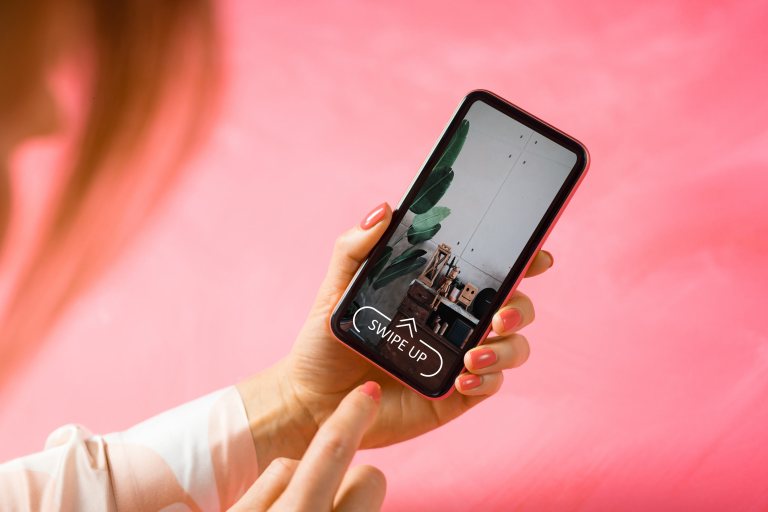
Marketing Psychology Principle number 8 – The Baader-Meinhof Phenomenon.
**Have you ever heard of something and only began to see it everywhere you go? That thing begins to pop up everywhere, and soon you start seeing it appearing in everyday life. Whenever you watch TV, you notice the brands’ commercials but not anything else. Whenever you go to the grocery store, you walk down the aisle and see it. It occurs to you that everyone, including all the friends of yours, all have the product. **
You should credit the Baader-Meinhof Phenomena for that.
The Baader-Meinhof effect is also known as the ‘frequency illusion’ because it’s a perceptual bias that describes how a name, term, or thing that has recently come to our notice occurs with unusual frequency immediately afterward. Or in other words, you see it everywhere on Earth.
Logically, that thing has always been there, but it was you who were unaware of it until the moment you heard of it. So why is it the case here?
There are two explanations why this phenomenon operates the way it does.
The first is selective attention, which suggests that your brain is subconsciously searching for more details about the subject when you are hit by a new phrase, object, or concept. The second is confirmation bias, which means that any time you see anything relevant to the subject, your brain assures you that it is evidence that the matter has gained traction overnight.
Let’s unpack what this Baader-Meinhof phenomenon means for marketing.
I’m sure if you’re a marketer, you know how profoundly necessary it is to nurture your customers and clients. As a brand, your goal should be to be the first thing that springs to the customers’ minds when they need something that you can offer. Have you ever heard someone say, “You are the first person that came to my mind” when they were pondering over something? If you can position your brand within your industry to be that “first person”, how beneficial would that be?
This task has now been made possible with the aid of psychological phenomena like Baader-Meinhof. Everything you need to do is nurture your audience. In other words, once someone starts noticing your brand or clicking around on your website, you’ll want to make them start seeing you everywhere.
**So how can you nurture your audience? **
Focus your marketing efforts on letting potential customers know that you exist through content that piques curiosity and makes them question how they have ever survived all these years without your product or service. You can then nurture them through marketing tactics such as retargeting ad campaigns, targeted emails, ad boosts on Facebook and Instagram, etc.
The key is to get into their heads, so they start noticing you; and let the Baader-Meinhof phenomenon do the rest for you
However, remember that your marketing strategies need to have both clarity and positivity to fully leverage the Baader-Meinhof phenomenon. Though this frequency illusion happens independently, without a concrete marketing foundation, you can’t yield any benefits of this psychological phenomenon.
When you work on your content to reach new customers, make sure the contents you create are clear and contain a positive brand message with tangible benefits.
In other words, you need to make a genuine effort if you want to see this phenomenon take action. You don’t need to strive to be the Adidas of athleisure or the Harry Potter of children’s novels, but make sure you leave your brand on top of consumers’ lists when making buying decisions.
Some extra tips & tricks to incorporate psychology into your marketing strategy.
For a marketer to effectively do their work these days, they first need to fully understand who the customers are, what they desire, and what pushes them to purchase. Does it sound like psychology to you? If yes, that’s because these strategies are based on psychological theories and are typically referred to as marketing psychology.
Here are some more tips and tricks to incorporate psychology into your marketing strategy.
1. Start small
This is widely known as the technique called **Foot-in-the-door.
Freedman and Fraser (1966) knocked on doors asking if people could do something little, like signing a petition or placing a sticker on their windows. They also purposefully skipped several did not talk to them at all.
Later, the conductors went to the same houses asking for something more significant than the first time, such as placing a big sign on their yard, which was related to the same issue as the prior request or related to another subject.
They found that individuals they had already met were more likely to agree to their more significant requests, almost 3 times more willing if the request addressed a new topic and more than 4 times more inclined if the request was about the same issue!

What does this mean for your Marketing strategies?
If you want to motivate customers to do something for you, one way to do it is first asking for small things and then scaling up your requests gradually. You can see companies applying this technique everywhere. First, a non-profit organization simply asks you to fill in your email address. Next, they keep you updated about their activities and success. Then, before you are conscious of it, they are asking you to donate.
The reverse of the foot-in-the-door technique is door-in-the-face, where you begin by asking for something big instead of starting small. You make some major offers, maybe something so questionable that the customer has to turn down.
2. Use spontaneous reward schedules
You know those stamp cards that some restaurant chains and coffee shops give you every time you buy something? You collect enough of those cards, and you will free meal?
In fact, while those cards are useful to some extent, they are not the most efficient way to motivate customers to return. Instead, you may want to try changeable reinforcement. Customers are rewarded spontaneously, instead of having an exact ratio reinforcement schedule, where customers are rewarded every 5th time or 10th time they come.
This strategy is based on operant conditioning in psychology, where we often associate our actions with events, for example, associating returning to a restaurant with getting a meal on the house.
Operant conditioning usually entails rewarding behavior to get more of that behavior.
Studies back this up too. Skinner has conducted a study of rewarding mice with food in two different ways:
- Reward food every 5th time it pressed a bar (fixed ratio scheduled)
- Reward food randomly (variable reinforcement).
He discovered that the second choice was more durable and required less reinforcement (less food). The mouse will continue to press the bar even when the reward’ value has sufficiently decreased, whereas non-habitually responding mice in the first option will quickly slow down their pressing rate.
What does this mean for your marketing strategies?
Although humans and animals are incompatible in some aspects, deep down, we are very similar. Imagine that a restaurant didn’t tell us whether they would give us a drink for free, how would we feel? We’d be going back to improve our odds of having the free booze as often as we can, or at least we were left with the impression that the company cares for us!
Look at Cereal brands and Willy Wonka’s chocolate factory for some examples. They reap the benefits of variable reinforcement by putting golden tickets in some of their cereal boxes or candy bars, fueling customers to want to purchase more for a shot to win!
3. Relate to your customers
Goldstein, Cialdini, and Griskevicius (2008) carried out a study on Using Social Norms to Motivate Environmental Conservation in Hotels . They attempted to determine what kind of message would inspire more hotel guests to reuse their towels. There were five variants of the messages.
- Standard environmental message: “help save the environment”
- Descriptive norm message: “Join your fellow guests in helping to save the environment”
- “Join your fellow guests who stayed in the same room in helping to save the environment”
- “Join your fellow citizens in helping to save the environment”
- “Join the men and women who are helping to save the environment”
As a result, the Standard Environmental Message “help save the environment” yielded a 35% of towel reuse rate, 10 to 15% less than that of the descriptive messages. What is even more interesting is that the same room identity descriptive norm condition yielded a significantly higher towel reuse rate.
**What does this research mean for marketing? **
This phenomenon where people generally view others who are closely related to them more positively is called in-group favoritism.

All in all, the easiest way to inspire your customers to do something is to suggest that other people in their circumstances have done this. Work to find common ground and make comparisons among your customers.
4. Attractively market your offers
Consider the situation below. Which one do you think is more appealing as a customer?
The initial price of an outdoor jacket is $125, and that of a tripod is $23 for the tripod. The company wants to reduce the price by $11.50 for anyone who buys both products. There are two ways to market this offer:
- $113.50 for the outdoor jacket, saved $11.50 and $23 for the tripod.
- $125 for the outdoor jacket; and 50% OFF for the tripod at $11.50.
Which option would you be more likely to buy if you had to spend 20 minutes driving to the store?

This adapted case is based on research by Kahneman and Tversky (1984). You might have realized that consumers are saving the same amount in both cases: $11.50! However, in that research, they discovered only 29% of the people were willing to purchase the jacket, while the percentage of respondents inclined to buy the tripod was 68%, more than double the jacket’s figure.
What does this mean for your Marketing strategies?
The point is that consumers perceive gains and losses in relative terms, not absolute terms. Or, they think in percentage, not in the number dollar. A tripod’s 50% discount of $11.50 is a larger percentage than a jacket discount of $11.50.
Be sure to consider this when designing your sales pitches and marketing messages! Think of more attractive ways to frame your messages - even if they mean the same thing.
You can extend the “rule of 100” to this context: For products that cost less than $100, the discount should be measured as a percentage. For example, a reduction from $5 to $3 amounts to a 40% discount, much more appealing than a $2 discount, right? On the other hand, for product prices more than $100, you should quantify the discounted price in dollars. For example, with an initial price of $500, a $100 discount would sound better than 20%.
5. Capture your audience’s attention
Castel, Vendetti, and Holyoak surveyed employees in a building in 2012. While the average time that the employees had been working in that building was 4.5 years, only 25% of the surveyed people knew the nearest fire extinguisher’s location. It is surprising to how low the figure is, given how dangerous it could be not to pay attention to these sorts of things.
What does this mean for your Marketing strategies?
Make sure to get and direct your audience’s attention. If you’re writing a blog and want your audience to pay attention to an important image, video, link, or call to action, be sure to draw their attention to that. You can try specifically addressing it in your writing or by making it stand out on the screen.
However, remember not to clutter your websites. I guess we’ve all been victims of loads of advertising and content on websites, which can be incredibly confusing and make it impossible to figure out what to concentrate on. In these situations, If I read a post, for example, I would find myself scrolling through and missing everything other than the text. But oftentimes, I found out that there was a picture or table I skipped that had very important information.
Don’t do this with the fantastic content you’ve produced, especially in this era of information abundance, which has contributed to short attention spans. Instead, strive to engage and catch their complete attention from the viewer.
6. Give your customers an Anchoring Price Point
Check out: Marketing Psychology Principle number 5 – Anchoring Bias
Customers who are not knowledgeable about your industry or products’ price range may seek a reference point or an anchoring price point to examine. If it is the case with you, you can seize the opportunity by providing what your customer needs to make a buying decision.
Let’s say you’re on the call with a potential customer, who may or may not be knowledgeable about the products’ reasonable price point. In other words, they do not know anything about the prices of rival products or your product’s future quality. If it’s via email, your potential customer will have more time to analyze and ponder the price further. However, with a phone call, time is constrained, and they have to think and react immediately to the deal.
This would be a perfect situation for you to throw an anchoring point. Maybe start by proposing a fairly high (but not ridiculously high) price that sets an anchor on which to base your customer. They will use this as their only data point, with no prior information. It is possible that further thought and debate will be gathered around this starting point.

Throwing an anchoring point aligns with the technique mentioned above called door-in-the-face, where you start high and then later negotiate a bit lower.
However, you need to be very cautious in deciding whether your customer is knowledgeable about the field or not. You don’t want to risk upsetting an informed customer by assuming they are not familiar and giving a price that they know is ridiculous relative to competing products. Some educated customers might not take it seriously, but others might. Anchoring is validated by scientific proof, but at the end of the day, beginning with a high price is simply an idea. It’s up to you to determine how best to respond to and apply to your conditions.
7. Get your customers to put in some effort
If you want someone to remember some information longer, Craik and Tulving (1975) demonstrated in a study that you need to get them to put in more effort. Or you can say: the depth of processing will determine how customers think of you.
Craik and Tulving presented a list of words to the subjects and instructed them to perform a task with each word. Then, they asked people to remember as many words as they could.
- Press ‘a’ if the word is in capital letter, press ‘b’ if not (15%)
- Press ‘a’ if the word rhymes with train, ‘b’ if not (47%)
- Press ‘a’ if the word fits the sentence “he saw a __ in the street” (81%).
The researchers later found out that the more effort the subjects had to invest in their learning (the greater their processing depth), the more vocabulary they recalled.
What does this mean for your Marketing strategies?
So how are you going to put your audience to work, but not in a horrific way? Think about the content that arouses your interest the most in your Facebook or Twitter feed. Is it the ads on your feed that are blended into the images of puppies? Or is it the BuzzFeed Quizzes “Which Cartoon Character Are You?”
Probably the latter! To maximize profits with your marketing endeavors, think about ways to incorporate similar quizzes and activities into your campaigns. If you work for a smartphone company, maybe you could make a quiz, “Which Smartphones Are You?” Similarly, if you’re the content creator of a company that has different types of products, you can make a quiz “Which _____ Are You?” to help customers buy the most suitable products.
Or, you can gamify your ads.
In other words, make your advertisements playable.

For years, gaming developers have used playable ads to stand out in a competitive market by letting people to “easily” demo a game before downloading it, with no conditions attached.
Non-gaming developers are also looking to use playable advertising to showcase their app capabilities and areas of focus and to interact in a gamified, unforgettable way with users.
According to a 2019 study conducted in eMarketer, playable ads are the most potent in-app ad format, with 28 percent of U.S. agency practitioners giving top scores to playable ads.
Mobile advertisers more often use playable ads to push app downloads. The ads can also be for other purposes, such as driving sign-ups, page clicks, app re-engagement, and customer retention, as well as branding strategies.
For instance, Reese’s generated brand awareness for Reese’s Pieces with a playable ad in the Pac-Man style, in which players swallow Reese’s Pieces instead of the usual pellets and ghosts. This brilliant marketing campaign has generated high interaction and repeats plays
Or you can look at PayPal for another example. In 2019, PayPal recently introduced a new feature for instant transfer. The company then built a playable experience to advertise the feature to current users and to attract potential users to try the service. Creating a playable experience helps PayPal attract new and keep existing customers in an innovative way.
8. Make your customers say “yes”
YES is a very powerful word. It’s the green light at the door that lets you in. Having people say yes to little things before going for the win is an age-old sales strategy. This provides a feeling of connection and pleasantness. Many companies use social media to make customers say yes to their offers: pump up an audience with social marketing, get them to take a minor step (watch a video or sign up for an email list), gain trust, and convert. This entire process is a series of small agreements which gradually open the door to a sale.
Conclusion
It is recommended that you start each marketing campaign by humanizing your end user. This is particularly important for any smart marketer. Marketing psychology on its own would not be enough to get the job done, though. There is no perfect general implementation. You need to incorporate marketing psychology with other marketing techniques that make sense of the product or service you offer to optimize success. In other words, approach from all directions.
Ongoing enhancement and refining help to optimize ad strategies, so you also should spend time on it. A blanket approach is rarely of use in any real-life situations. At the end of the day, discovering your own magic formula for success is up to you.
Remember, there is no “one-size fit-all” marketing strategy. What makes one business successful may turn another down. All in all, study your customers, figure out what they want and need, then work to find the finest way to close the deal.
Now, it’s high time you put the theory to practice and apply psychology to your own marketing!
New Posts

How To Set Up Google Analytics 4 For Your BigCommerce Store






